MCU (MicrocontrollerUnit, aka Microcontroller) is everywhere. If there is no MCU, it is like an electronic product lacking a “heart”, it cannot be built, and it cannot be sold.
Air conditioners, remote controls, smart chargers… Any electronic product that requires automation in life will basically be equipped with MCU. Various household appliances usually require at least one, while complex industrial equipment or cars will use dozens to hundreds particles.
An MCU integrates the central processing unit, random access memory, read-only memory and other functions of the computer, which is equivalent to a microcomputer. It has complete functions, strong control, strong anti-interference, small size, low power consumption and low cost. It is logical to become the “darling” of the electronic age.
MCU is widely used in various electronic products, industrial control, motor control, smart city, smart meter, smart home appliance, smart door lock/access control medical, battery and energy management, biometrics, optical communication, sensor control and robotics… It can be said that MCU is the “master key” to solve all scenarios with control requirements, and its downstream applications have also penetrated into thousands of industries.
Insights from Texas Instruments (TI) has introduced a new family of wireless microcontrollers (MCUs) to its connectivity portfolio, enabling high-quality, low-power Bluetooth connectivity at the price of competing devices. half.
Continue the glory of the first three generations of products
The MCU product launched by TI is the fourth-generation product of Bluetooth low energy consumption. The background of launching this product is the increase in the demand for Bluetooth.
Mark Powell, CEO of the Bluetooth Special Interest Group (SIG), the organization responsible for Bluetooth technology standards, said: “In 2022, industry-wide shipments of Bluetooth devices will reach 5 billion. The investment of Bluetooth SIG members such as Texas Instruments (TI) And with participation, Bluetooth technology will be able to meet the growing demand for more applications that enhance wireless connectivity.”
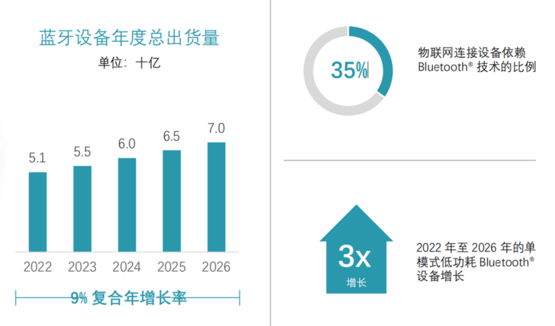
Looking back at history, TI is not a newcomer to Bluetooth low energy MCUs. According to Shi Ying, director of embedded and digital optical processing applications in Texas Instruments (TI) China, TI has been a very important contributor since the low-power Bluetooth technology standard first appeared. TI has been contributing to the Bluetooth field for two decades.
The first generation of Bluetooth low energy products is the CC254X series launched in 2010. This is the first batch of low energy Bluetooth SoCs in the global industry. To this day, this product is still used by customers in various industries, and the cumulative shipments exceed 500 million pieces.
The second-generation products are CC2640 or 264X series products launched in 2015. Compared with the first-generation products, the second-generation products have two biggest technical updates. First, the internal CPU core of the SoC has been updated from the 8051 core to the Arm core. Second, It is the first SoC product in the market to use the Bluetooth 5 standard.
The third-generation product is a 26×1, 2, and 4 product launched in 2019. This product mainly continues to expand the hardware on the second-generation product, including different packages, different peripheral function modules and different memory sizes, which can support Precise indoor positioning and personal device positioning, such as in indoor navigation products or in car keys. At the same time, the third generation of products also began to support mesh networking and multi-protocol operation.
The fourth-generation product CC2340x also continued the legend of the previous three generations, with revolutionary progress and development. One is higher-quality RF performance and better low-power performance, and the other is to achieve the ultimate price/performance ratio, with the starting price on TI’s official website as low as $0.79 (minimum order of 1,000 pieces).

Super hard parameters
In terms of parameters, the C2340R2 and CC2340R5 wireless MCUs have 256KB and 512KB of flash memory respectively, providing engineers with excellent flexibility and sufficient code application space. In addition, as Bluetooth low energy applications become more common, designers need additional memory capacity to easily perform remote software updates. The new wireless MCU family has 36KB RAM and supports over-the-air downloads.
It is worth mentioning that the new MCU has an excellent standby current of less than 830nA, which is about 40% lower than the market average. The reduction in standby current helps extend battery life, extending the life of coin cells for wireless applications such as electronic shelf label systems and tire pressure monitoring systems to up to 10 years.
The CC2340 series also has an operating temperature range of –40ºC to 125ºC, helping to ensure a stable connection whether it is used in industrial sensors and medical laboratories, or in outdoor environments such as electric vehicle chargers or smart meters.
Shiying introduced that from the perspective of product peripherals, the product integrates DC/DC, which can be directly connected to the battery to work, and the working voltage is a wide working voltage of 1.71V~3.8V. In addition, it is also equipped with AES-128, which cooperates with the true random number generator, which can help customers to add many encryption functions in their own designs.
The output power of the new wireless MCU series is as high as +8dBm, which is comparable to the industry’s low-power Bluetooth wireless MCU competitors, and also allows engineers to expand RF performance and connection range. Additionally, the CC2340 series features an integrated RF balun, enabling simpler designs with fewer external components, resulting in cost savings.
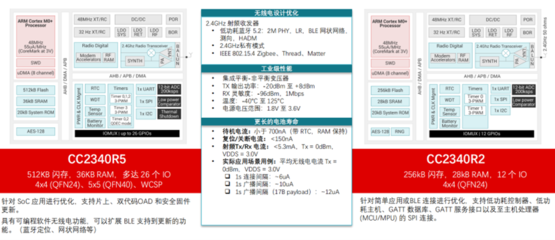
Power a wide range of applications
“More and more personal products need to be connected to smartphones, which can collect data, manage devices, and record and manage some health indicators and some living habits of each individual, including personal electronic products. Various storage devices, printing devices, especially miniature printing devices, as well as wireless PC peripheral products.” Shi Ying said.
According to reports, new low-power Bluetooth products can be widely used in many different market fields, including building automation, air conditioning HVAC, building security, retail terminals, etc., practical applications such as electronic shelf labels, Bluetooth on sales terminals Interconnection, blood sugar, blood pressure, insulin, razors, toothbrushes, facial cleansers, voice remote controls, electronic smart toys, etc.

TI also showed some examples of carrying new products. With more memory, longer battery life, and a wider temperature range, engineers can affordably implement more everyday connectivity applications such as:
Medical equipment: In blood glucose meters, the CC2340MCU can provide end products with a shelf life of 18 to 24 months with a standby current of less than 830nA, and can run in Bluetooth Low Energy mode for up to 18 to 24 months when powered by a coin cell battery two weeks.
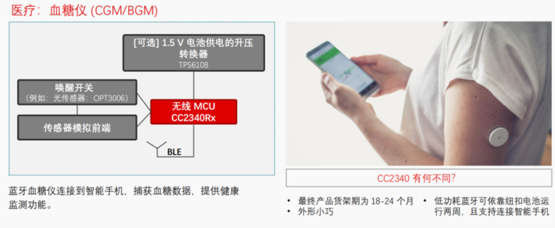
Building Automation: Smart home control centers can take advantage of the CC2340MCU’s wireless protocol support and output power range up to +8dBm.
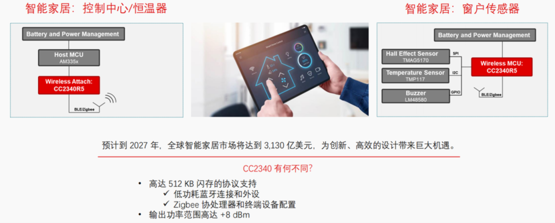
Personal Care: The CC2340 wireless MCU enables low power consumption when products such as electric toothbrushes are in sleep mode and can extend battery life.
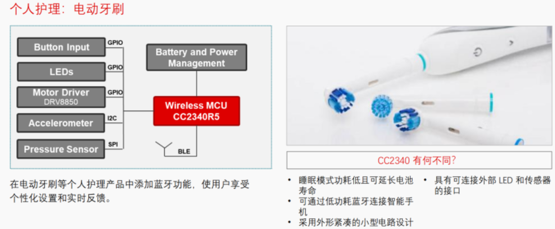
There will be abundant capacity support behind the new products. According to Shiying, TI’s six new fabs will support growth over the next 10 to 15 years. TI’s strong support comes from an external manufacturing footprint, as well as an expanding TI manufacturing footprint including an investment in a 300mm fab, including the new RFAB2 in Richardson, Texas, the acquired LFAB in Lehi, Utah ( This is the 4th 300mm fab), and TI also plans to build a 5th, 6th, 7th and 8th 300mm fab in Sherman, Texas. TI, external and third parties are supported by a global manufacturing footprint unmatched in Bluetooth low energy connectivity.
New products will also have rich technical support. To simplify deployment, engineers can contact TI application engineers through the TIE2E Bluetooth Support Forum. Engineers also have access to a proven, royalty-free Bluetooth Low Energy software stack that TI has supported and kept updated since 2010. Building on TI’s decades of wireless connectivity expertise, the SimpleLink Bluetooth Low Energy CC2340 family offers outstanding standby current and radio frequency (RF) performance.
According to Shiying, the new wireless MCU is expected to be mass-produced in the first half of 2023.
This article is reproduced from: http://www.guokr.com/article/461678/
This site is for inclusion only, and the copyright belongs to the original author.